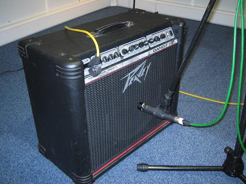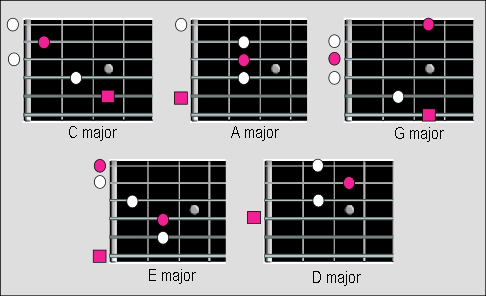Welcome to the complex, confusing, and difficult world that most beginner guitarist affectionately refer to as guitar intervals.
It should be noted that learning the intervals alone can be quite difficult for guitar players, especially if you are just beginning to learn the various names such as major second and perfect fourth. Match this alongside the trouble many beginners have in remembering that guitar sounds one octave lower than written, and you have a subject that most desire to ignore or skip altogether.
According to Mike Hayes, a guitar coach, the numerous years of teaching experience has led him to one simple conclusion in regards to intervals – they’re easy to understand when presented in a particular sequence that the individuals can successfully recall the sound.
The first interval you need to learn is the major third followed by the minor third. Once, you are able to accomplish those feats, the “perfect fifth” is your next grand battle.
The perfect fifth interval is a very common interval and when the two notes of the perfect fifth interval are played simultaneously, they produce what is technically called the “harmonic fifth.” In rock terms, the harmonic fifth is more commonly known as the ”power chord.”
Interesting enough, most guitarists have been playing the harmonic fifth for quite some time, although they do not refer to it by it’s technical title. Similarly, they say most writers understand grammar, yet are unable to dissect the piece and individually label each word by it’s grammatical term.
The same is true of the guitar and it’s relationship to intervals.
Harmonic Fifth
If you would like to hear a phenomenal example of the harmonic fifth, listen to the opening chords of Dire Straits – “Money For Nothing”
——-
——-
–7—-
–5—-
——-
——-

Now that you have an understanding of what the perfect fifth is suppose to sound like, do your best to attempt to hear the interval when played as single notes. Begin by playing the equivalent of middle “C” (piano) on the guitar fretboard. Middle ”C”s reference pitch is the third string; fifth fret.
——-
——-
–5—-
——-
——-
——-
Now play the note “G” (second string; fret eight).
——-
–8—-
——-
——-
——-
——-
Listen closely to the sound of the two notes. That, my friend, is the interval of a perfect fifth when its ascending.
Play the two notes again, this time listening carefully for the “space” between the first note (middle C) and the G. That’s the sound you need to be able to recall.
Now, play the two notes as a chord…
Harmonic Fifth
——-
–8—-
–5—-
——-
——-
——-
Note that this harmonic fifth is different from the one presented earlier in the song, “Money For Nothing.” While it may sound different, the Dire Straits song and the chord you just played are from the same interval only in a different key.

In order to hear, recognize, and most importantly recall the sound of the perfect fifth interval, GLC further recommends these songs for the ascending perfect fifth:
1. Twinkle, Twinkle Little Star
2. One (Metallica)
3. Star Wars
4. Scarborough Fair
5. Can’t Help Falling In Love (Elvis Presley)
The five songs listed above are just a few of the many that begin with this interval.
In theory, a guitarist that constantly “looks” for the perfect fifth interval will eventually master the technique in his or her own work.
In other words, we just gave you an excuse to listen to music. Now go!








